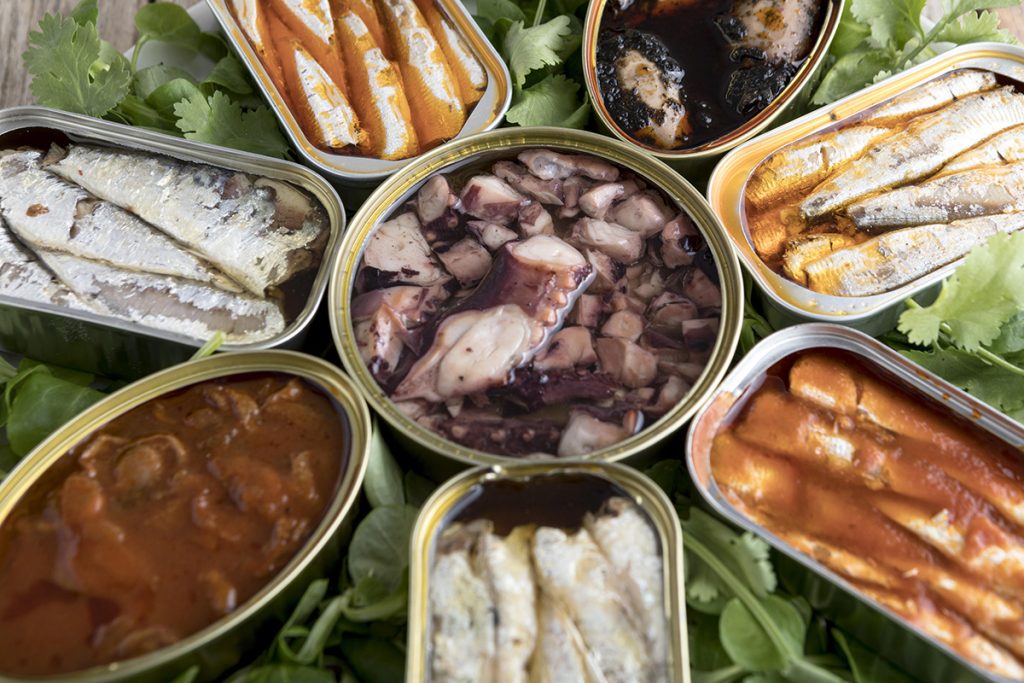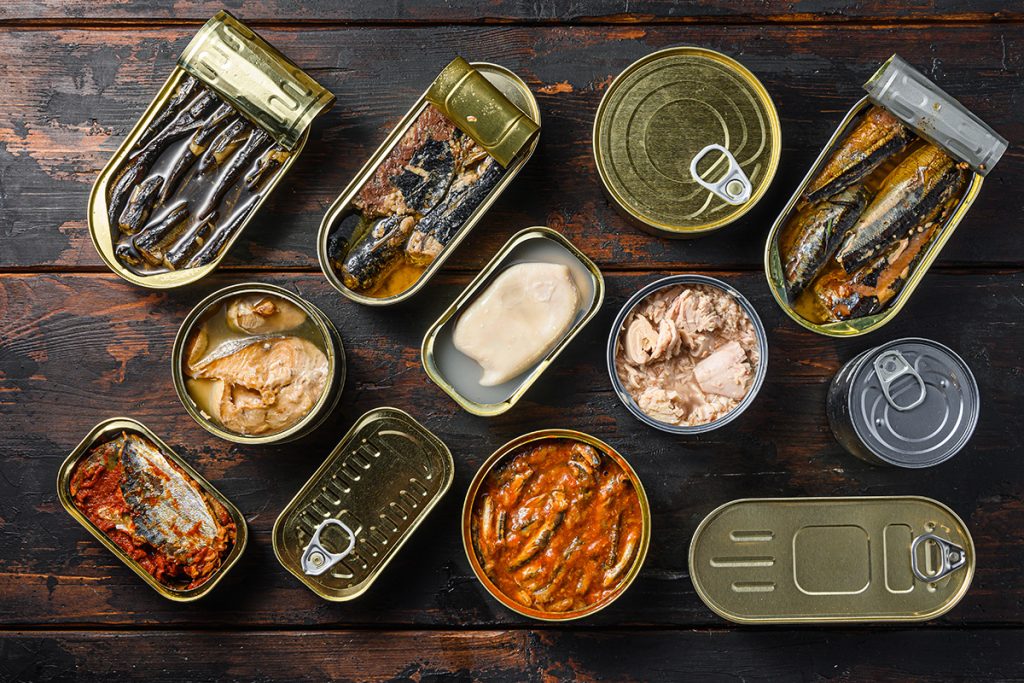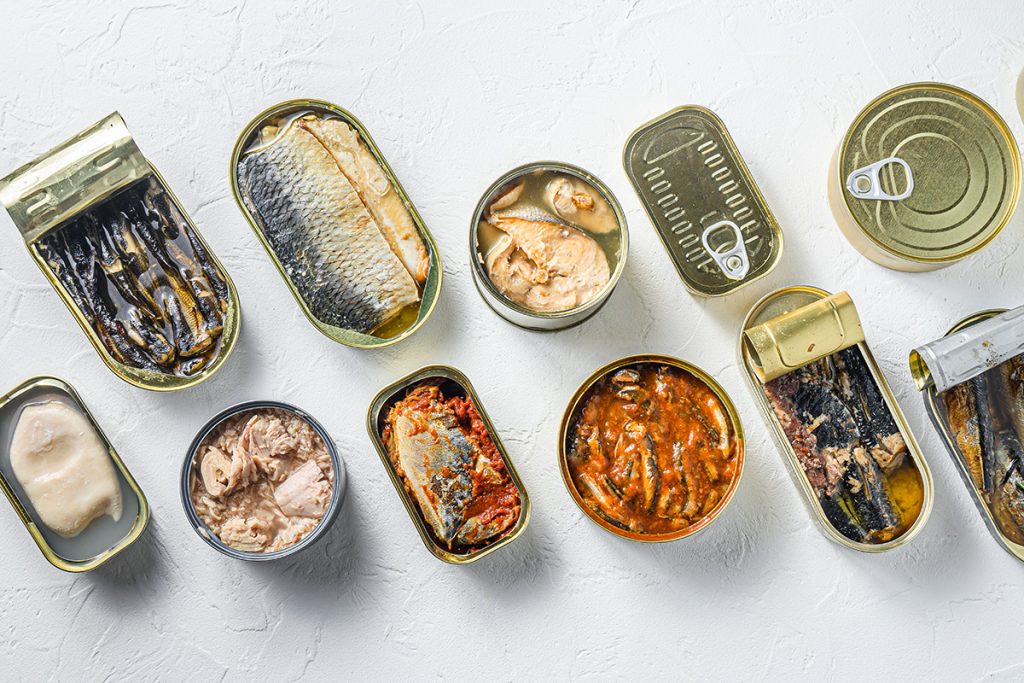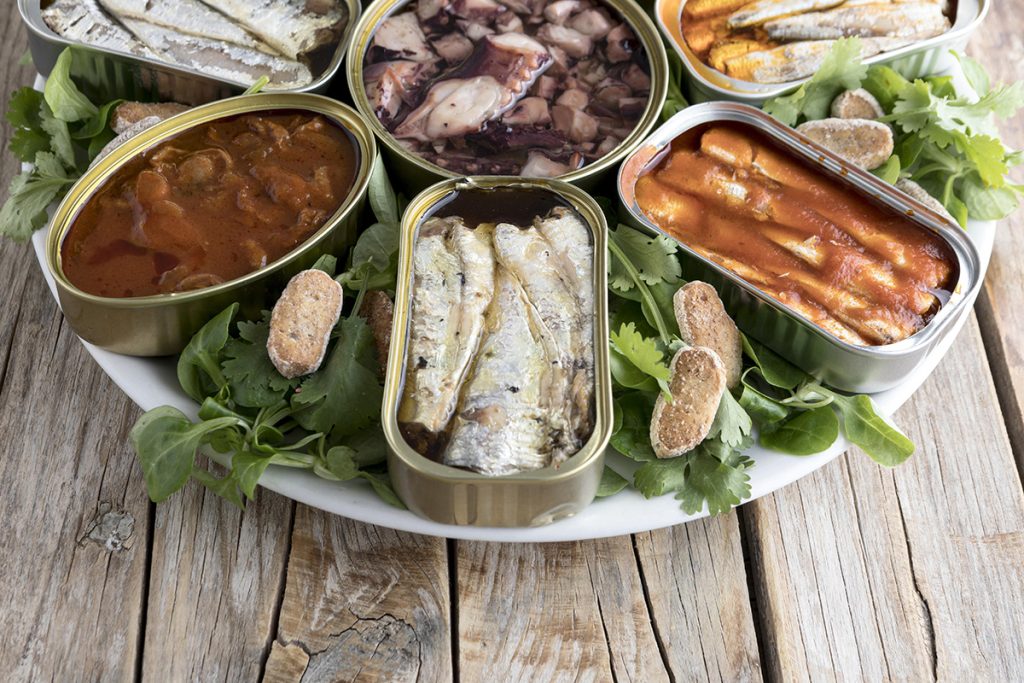5 Important reasons why you should eat more canned fish

Canned fish, known as tinned fish or conservas in the Iberian Peninsula, and kanzume in Japan, where it can include various ingredients, is gaining significant popularity worldwide. While canned tuna might be the first to come to mind, there’s a wide array of fish that can be preserved in cans. This preservation method is not only convenient but also seemingly magical.
Among the canned fish varieties like salmon, sardines, mackerel, and anchovies, you can find a treasure trove of shelf-stable nutrition packed with heart-healthy omega-3 fatty acids. The consumption of fish, especially those rich in omega-3s, aligns with the renowned Mediterranean diet, consistently ranked as one of the healthiest eating patterns.
Besides their nutritional value and affordability, canned fish offers remarkable versatility. Let’s explore the nutritional and culinary advantages that justify giving canned fish more space in your pantry.

The canned fish trend & the Mediterranean diet
The variety of fish available in canned form is as vast as the ocean itself. Over the past few years, the selection has expanded from the traditional canned tuna, salmon, anchovies, and sardines to now include trout, mackerel, cod, mussels, clams, oysters, octopus, and squid.
Notably, restaurants, wine bars, chefs, and specialty stores have embraced canned fish, presenting it in a manner similar to a charcuterie board, complete with accompaniments like pickles, mustards, and crackers. Additionally, high-quality canned fish is increasingly being used as a substitute for more saturated-fat-rich foods, such as pâté and cured meats.
This transition from red meat to fish aligns with the principles of the Mediterranean diet. Although initially rooted in the traditional foods of Mediterranean countries, this healthy eating pattern, which prioritizes fruits, vegetables, whole grains, legumes, and healthy fats, can be easily adapted to different cultural backgrounds and individual dietary preferences. In this approach, fish and other lean proteins take the forefront, replacing meat as the primary source of protein.
Let’s explore the five most compelling reasons to incorporate more fish into your diet, considering both its nutritional benefits and culinary advantages.

01. A rich source of omega-3 fatty acids
Omega-3 fatty acids are classified as essential fats since our bodies cannot produce them and must obtain them through dietary sources or supplements. Numerous studies, including a 2019 article in International Immunology, have demonstrated the beneficial impact of a diet rich in omega-3s throughout the body, primarily due to their anti-inflammatory properties.
These healthy fats contribute to heart health by enhancing the levels of beneficial HDL cholesterol, as indicated in a 2018 article published in Food & Function. Moreover, a 2022 review in Nutrients highlights their crucial role in joint health, particularly for individuals with osteoarthritis, thanks to their anti-inflammatory effects.
Among the canned fish varieties like anchovies, salmon, sardines, and tuna, you’ll find excellent sources of omega-3 fatty acids. To promote optimal health, the 2020-2025 Dietary Guidelines for Americans recommend that adults consume 8 ounces of seafood per week.

02. Longer shelf life compared to fresh or frozen options
According to a 2018 report from the Food and Agriculture Organization of the United Nations, approximately 27% of all captured fish worldwide goes to waste, mainly due to its limited fresh food safety window.
Canned seafood presents a solution to this issue as it offers a lengthier shelf life compared to fresh or frozen alternatives. When fish is canned, it is sealed in an airtight container and either heated or preserved with salt, allowing it to remain edible for years instead of mere days. Even frozen fish, which is considered a more budget-friendly option than fresh seafood, does not maintain the same quality and longevity as canned fish.
The remarkable shelf stability of canned fish makes it an ideal choice for individuals with limited access to utilities, providing a reliable and nutrient-rich protein source. Additionally, it becomes an excellent option for travel, camping, and picnics, where refrigeration might not be readily available.

03. An environmentally friendly choice: sustainability in canned fish
Canned fish can offer a sustainable seafood option, thanks to the efforts of numerous companies that prioritize collaboration with local fisheries and canneries committed to eco-friendly fishing practices. When seeking sustainable canned fish products, it is essential to check the label to ensure that the fisheries involved are utilizing environmentally friendly equipment.
To make well-informed choices, the Monterey Bay Aquarium Seafood Watch, a conservation program by the Monterey Bay Aquarium, recommends looking for specific terms on canned fish labels, particularly for tuna. These terms include pole-and-line-caught, pole-caught, troll-caught, FAD-free, free school, and school-caught.
Conversely, if there is no information provided about the fishing method, particularly for tuna, it may indicate that the fish was harvested using unsustainable practices. Being mindful of these details empowers consumers to support sustainable practices within the canned fish industry.

04. A valuable source of vitamin D and calcium
Vitamin D and calcium play a crucial role in promoting strong and healthy bones, working together synergistically. Although your body can produce vitamin D with sunlight exposure, it can be challenging to obtain sufficient amounts through diet alone. Fortunately, canned fish, including tuna, salmon, trout, and sardines, are excellent sources of both calcium and vitamin D.
For instance, a 3-ounce serving of salmon provides approximately 570 IU of vitamin D, which amounts to 71% of the recommended Daily Value, according to the National Institutes of Health. Including these canned fish varieties in your diet can significantly contribute to meeting your vitamin D and calcium needs, supporting bone health and overall well-being.

05. Delicious & all-round: the delights of canned fish
One of the most compelling reasons to embrace canned fish is its delightful taste and impressive versatility, both as a standalone treat and as a culinary ingredient. With various types of canned fish available, such as octopus, squid, and mussels, some can be savored directly from the cans alongside crackers, while others perfectly complement diverse recipes.
For example, anchovies are indispensable for crafting a classic Caesar salad, while canned salmon and tuna lend themselves to creating mouthwatering salmon burgers and tuna melts. Canned mussels, clams, and sardines elevate pasta dishes to showstoppers and serve as protein-rich toppings for salads. Moreover, canned trout can be effortlessly transformed into a spread worthy of a gourmet restaurant.
Embracing the deliciousness and adaptability of canned fish opens up a world of culinary possibilities, making it an enjoyable addition to any menu.

5 Important reasons why you should eat more canned fish conclusion
The rising popularity of canned fish can be attributed to several compelling factors. This delectable, nutritious, and cost-effective ingredient allows you to effortlessly prepare a wholesome meal within minutes, all from the comfort and convenience of your pantry.
When it comes to canned fish, you’ll find a wide array of options available. From well-known big brands adorning grocery store shelves to specialized brands offering curated and artisanal tins, the choices are abundant.
Whether you seek to increase your omega-3 intake, acquire an excellent dietary source of vitamin D, or opt for sustainable and shelf-stable fish options, canned fish proves to be the ideal solution, satisfying all your requirements.



















